Formed January 27, 1922 | Dissipated January 29, 1922 | |
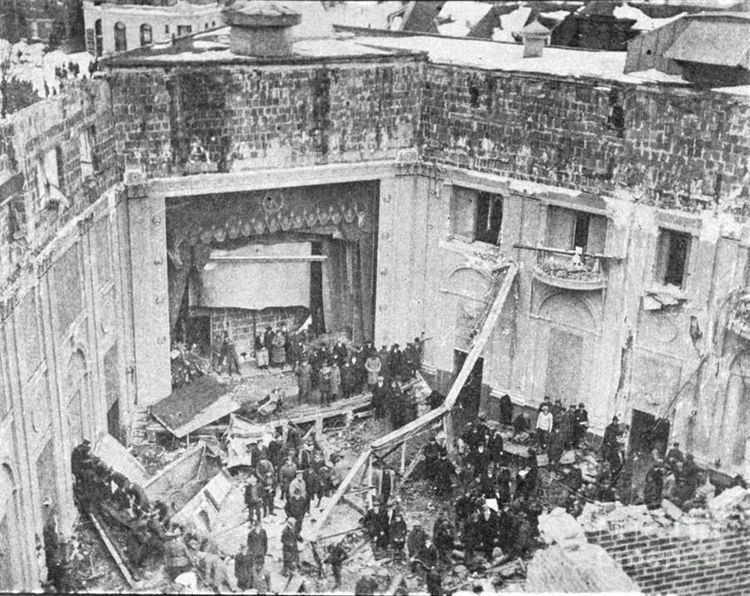 | ||
Type Extratropical cycloneBlizzard Casualties 98 fatalities, 133 injured Similar February 5–6 - 2010 North Am, 1940 Armistice Day Blizz, Schoolhouse Blizzard, Great Storm of 1975, Great Blizzard of 1888 | ||
Weather history knickerbocker storm 1922
The Knickerbocker storm was a blizzard that occurred on January 27–28, 1922 in the upper South and middle Atlantic United States. The storm took its name from the resulting collapse of the Knickerbocker Theatre in Washington, D.C. shortly after 9 p.m. on January 28 which killed 98 people and injured 133.
Contents
- Weather history knickerbocker storm 1922
- Setup for the event
- Impact
- Impact in Washington DC
- Theater roof collapse
- References
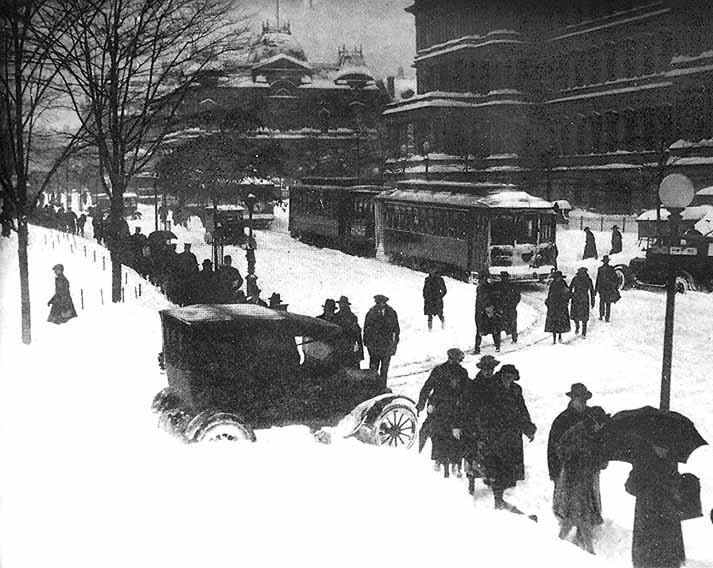
Setup for the event
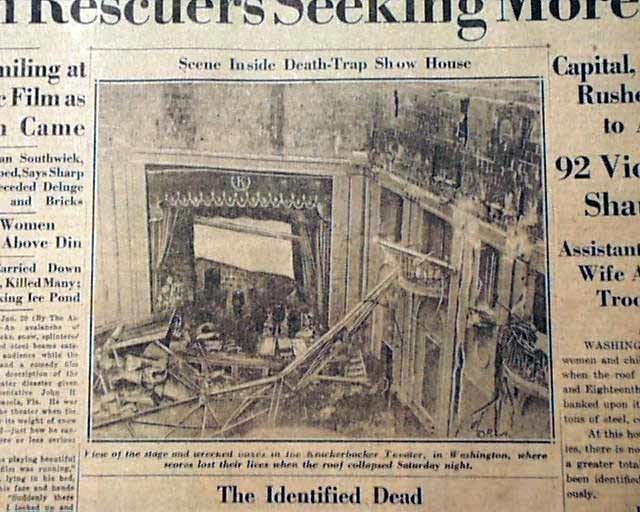
An Arctic airmass was in place across the northeast United States; Washington, D.C. had been below freezing since the afternoon of January 23. The front that spawned the cyclone was almost completely dry until after it crossed the Gulf of Mexico, making this storm unique among large southeast snowstorms. Despite the slow start, a low formed and deepened rapidly off the Georgia coast as the cold front reached the Gulf Stream on January 27. Heavy snow quickly developed from the Carolinas to Pennsylvania as the low drifted north to the outer Banks of North Carolina on the 28th. A strong high pressure to the north helped to cut the system off from the jet stream. As a result, the cyclone took three days to move up the Eastern Seaboard, which was double the normal time used by forecasters of that era to move storm systems up the coast. Snow reached Philadelphia and Washington, D.C. by noon on January 28, and continued into the morning of January 29. Temperatures remained in the 20s Fahrenheit (-5 °C) through much of the event.
Impact
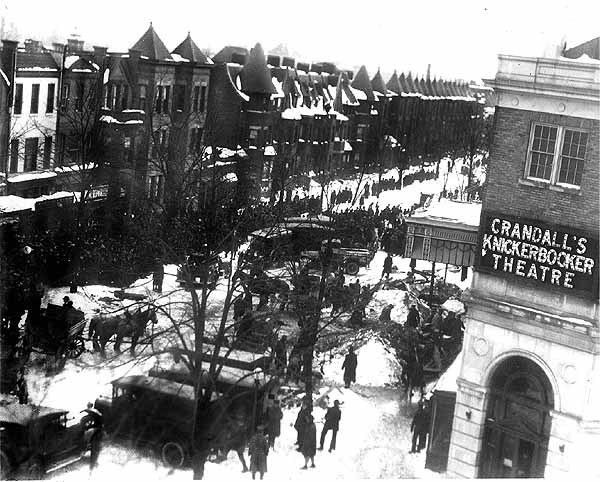
An estimated 22,400 square miles (58,000 km²) of the northeast United States were affected by 20 inches (51 cm) of snow from this cyclone, which was over one-fifth of the total area that received over 4 in (10 cm) of snow. Snowfall was quite heavy in Maryland and Virginia. Richmond, Virginia recorded 19 inches (48 cm). Baltimore, Maryland was paralyzed as it received the most snowfall within 24 hours since 1872. Parts of North Carolina also received over one foot of snow.
Impact in Washington, D.C.
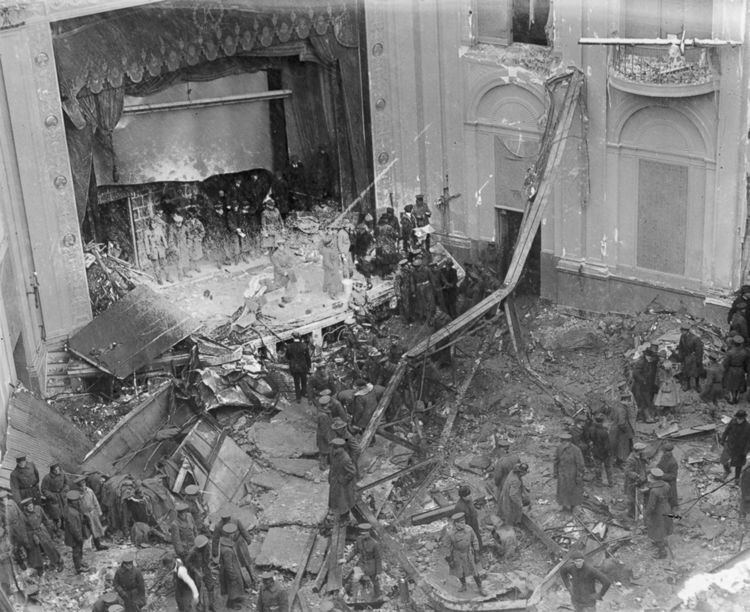
The measured snow depth at the main observing site in Washington, D.C. reached 28 in (71 cm) while an observer in Rock Creek Park a few miles to the north measured 33 in (84 cm) with 3.02 in (76.7 mm) of liquid equivalent. Railroad lines between Philadelphia, Pennsylvania and Washington, D.C. were covered by at least 36 in (91 cm) of snow, with drifts as high as 16 ft (4.9 m). This snowstorm is the biggest in the history of Washington, D.C. since official record keeping began in 1885 (although it is dwarfed by the 36 inches (91 cm) of snow in the Washington–Jefferson Storm of January 1772). Among other disruptions, Congress adjourned as a result of the storm.
Theater roof collapse
The Knickerbocker Theatre was the largest and newest movie house in Washington, D.C., built in 1917 and owned by Harry M. Crandall. The roof was flat, which allowed the snow which had recently fallen to remain on the roof. During the movie's (Get-Rich-Quick Wallingford) intermission, the weight of the heavy, wet snow became too much for the roof to bear. The roof split down the middle, bringing down the balcony seating as well as a portion of the brick wall. Dozens were buried. The media reported it as similar to a scene from World War I. People with lanterns frantically attempted to rescue victims of the disaster. By midnight, 200 rescue workers had organized the scene. The numbers of those involved in the rescue increased to over 600 by 2:30 a.m. Nearby residents helped feed the rescuers, also supplying them with hot drinks. This disaster ranks as one of the worst in Washington, D.C. history. Congressman Andrew Jackson Barchfeld was among those killed in the theater. The theater's architect, Reginald Wyckliffe Geare, and owner, Harry M. Crandall, later committed suicide; Geare in 1927 and Crandall in 1937.
